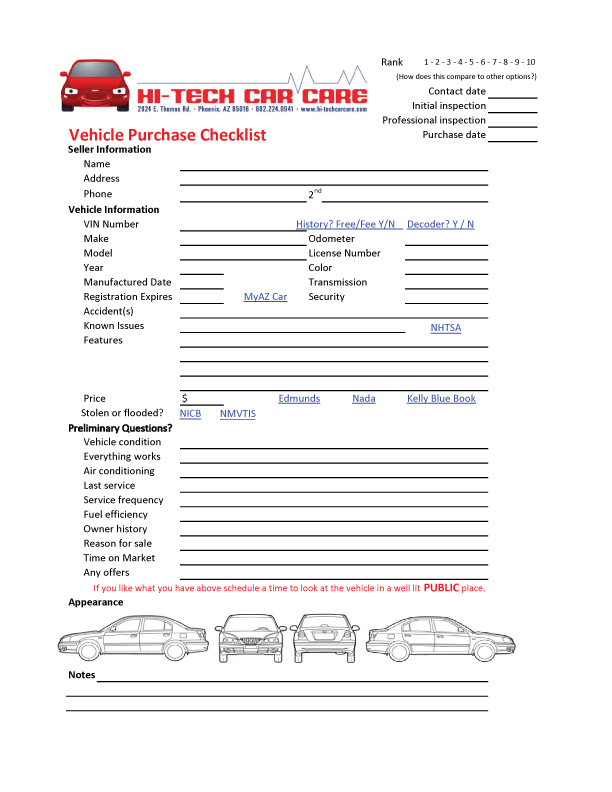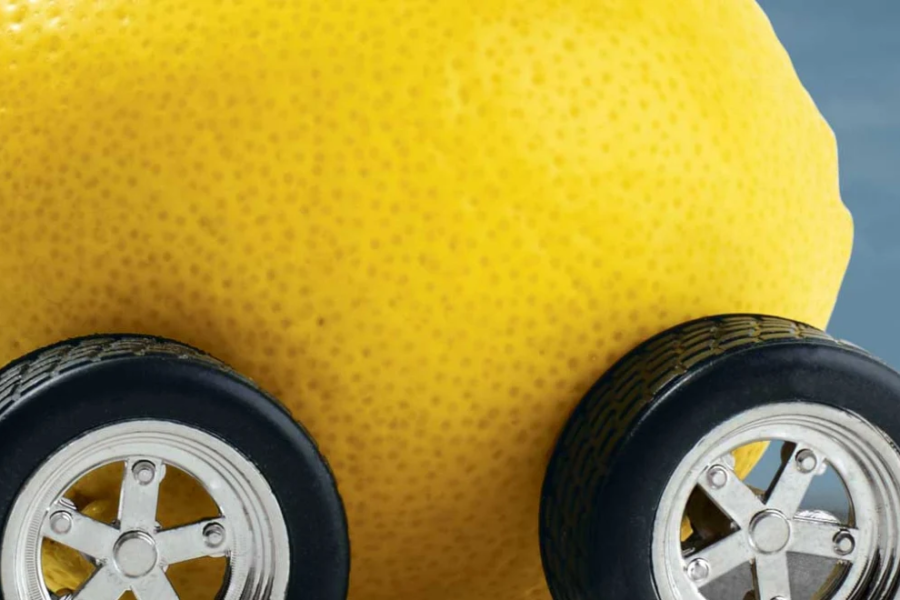

Used car inspection is critical in the USA when considering a used vehicle purchase. It’s a necessary step to prevent getting stuck with a lemon and potentially facing costly repairs or a frustrating ownership experience. Buying a used car can be a great way to save money, but it’s essential to know how to conduct a comprehensive inspection to avoid costly mistakes. This guide will take you step-by-step through a thorough inspection process, equipping you with the knowledge and tools to make informed decisions and find the perfect used car. The structure of this guide will cover a visual inspection, a mechanical assessment, and key questions to ask the seller. We will also look at important considerations to keep in mind, ensuring you make a smart and safe purchase.
Visual Inspection: A Quick First Impression
Exterior Assessment
A thorough visual inspection starts with a careful examination of the vehicle’s exterior. Look for signs of damage, such as dents, scratches, or rust, which can indicate prior accidents or neglect. Check the paint condition, and examine for inconsistencies in color or shine. A professional inspection involves checking the alignment of the body panels. Uneven panels may point to structural issues. Look for any signs of repair work or body panels that don’t seem to line up correctly. Pay attention to the glass, windows, and lights. Ensure they are undamaged and functional. Take note of any missing components or oddly placed parts. A visual inspection should also include checking the tires; their tread depth, wear, and condition. Inspect any modifications or add-ons to the car. Ensure their quality and installation, checking for any potential issues or safety concerns.
Interior Assessment
Shifting focus to the interior, inspect the dashboard for any cracks, wear, or damage. Look for signs of water damage or unusual smells. The seats should be in good condition, free from significant wear or stains. Check the upholstery, looking for damage or unusual fabric textures. Examine the steering wheel for wear and tear and check the functionality of the controls. Inspect the car’s interior lighting and other accessories. Evaluate any aftermarket components for their quality and fit.
Documentation and History Checks
Review all available documentation thoroughly. This includes the car’s title, maintenance records, and any repair history. Any red flags should be examined further by a professional.
Mechanical Assessment: Diving Deeper into the Engine Room
Engine and Transmission
A thorough mechanical assessment is crucial for evaluating the engine’s condition. Start by checking the engine compartment for any leaks, fluids that don’t belong, or unusual noises. Inspect the engine’s overall cleanliness and identify any signs of wear and tear. A basic compression test can help evaluate the engine’s efficiency and compression levels. Inspect the transmission and examine for any unusual noises. Ensure the transmission shifts smoothly and efficiently through all gears. Be sure to evaluate how smoothly the gears shift, and if the gears have a strange resistance. Pay attention to any unusual sounds or vibrations during operation.
Electrical System
Carefully examine the electrical system. Inspect all lights, turn signals, and other electrical components for proper function and operation. Check the dashboard gauges to ensure that they’re in the correct range. Examine the battery terminals for corrosion or damage. A professional inspection can identify electrical issues not detectable through a basic visual evaluation.
Undercarriage Assessment
A crucial part of a mechanical assessment is an undercarriage check. Look for any signs of rust, leaks, or damage to the frame. Pay attention to the exhaust system for leaks or any noticeable issues. Assess the suspension components and check for any abnormal wear or damage. Check the steering system and evaluate its alignment and free movement.
Questions to Ask the Seller: Uncovering Hidden Issues
Inquiry about Maintenance History
A crucial part of assessing a used car involves questioning the seller about the vehicle’s maintenance history. Ask about routine maintenance, such as oil changes and tire rotations. Inquire about any major repairs or accidents. Documentation can verify the claims of the seller. Inquire about previous repairs and maintenance records to determine potential issues and any recent servicing. Obtain receipts or documents, if available, to support the seller’s claims.
Asking About Problems or Accidents
Address any potential problems or accidents that might have occurred. Ask direct questions about the vehicle’s history and inquire about any accidents the vehicle has been involved in. Be direct and not afraid to ask for details and specifics regarding the car’s usage history.
Understanding the Seller’s Knowledge
Assess the seller’s knowledge about the car. Their familiarity with the vehicle’s mechanical components and maintenance history can be an indicator of their honesty and reliability. A seller who provides extensive knowledge about the car may also be aware of any problems. This will potentially give you an idea of how well maintained the car truly is. A professional inspection can confirm the seller’s information and provide an objective evaluation of the vehicle’s condition.
Important Considerations: Protecting Yourself
Researching Local Used Car Laws
Familiarizing yourself with local laws and regulations regarding used car transactions is essential. Knowing your rights as a buyer can safeguard your interests. Understanding lemon laws and consumer protection laws is crucial. Check with your local consumer protection agency or the state department of motor vehicles for detailed information about regulations.
Seeking Professional Help
Consider consulting with a certified mechanic or using reputable online resources for a thorough pre-purchase inspection. A professional assessment can provide an objective evaluation of the car’s condition. Look for recommendations from friends and family, review online reviews, and check if mechanics are certified. Professional inspections can often spot potential problems that a basic visual inspection may miss.
Negotiation and Purchase Process
Negotiate the price based on your research and inspection findings. Be realistic in your expectations, especially when considering potential repairs.
Final Inspection Checklist
Compile a detailed inspection checklist to ensure all aspects of the car are considered before making a purchase. It will also keep your thoughts organized and ensure that nothing is overlooked during the process. Ensure the paperwork is in order and that the vehicle is properly documented. A checklist can guide you through each step.
Further Tips for an Effective Inspection
Drive the Car
Take the car for a test drive under various conditions. This includes different road types and speed levels. Pay attention to any unusual noises, vibrations, or handling issues during the drive.
Checking the Documentation
Thoroughly review all documentation, including the vehicle’s history report, maintenance records, and any repair history. This step is crucial for evaluating the car’s condition and identifying potential problems.
Engaging with a Mechanic
Consult with a certified mechanic for a pre-purchase inspection if needed. A professional mechanic can help identify any hidden issues and provide an expert assessment. Don’t hesitate to get a second opinion.
Additional Inspection Considerations
Vehicle’s Condition
Look for any signs of neglect or abuse, such as signs of rust, damage, or wear and tear. Assess the overall condition to ensure the car meets your expectations.
Understanding the Terms
Thoroughly understand the terms of the sale and any warranties offered by the seller. Get everything in writing to avoid misunderstandings.
Safety and Security
Consider the vehicle’s safety features and security measures to ensure the car meets your safety needs. Inspect the safety and security measures to ensure a safe vehicle.
Checking for Potential Problems
Checking the Fluids
Check all fluids, including oil, coolant, brake fluid, and power steering fluid, to ensure they are at the correct levels and free of leaks or contaminants.
Evaluating the Condition of the Tires
Assess the condition of the tires for wear, tear, or damage. Check the tread depth and ensure that the tires are safe for driving.
Observing the Brakes
Carefully examine the brakes for any signs of wear or damage. Inspect the brake pads and rotors and look for any unusual noises when braking.
Frequently Asked Questions
What are the most common issues found during a used car inspection?
Common issues during a used car inspection include engine problems, transmission problems, electrical issues, and body damage. These issues often manifest as unusual noises, performance problems, or visible signs of wear and tear. A comprehensive inspection, including a mechanic’s assessment, helps identify these issues and determine their severity. Professional inspections often involve advanced diagnostics which can spot problems not readily apparent during a visual inspection.
How much does a thorough used car inspection cost?
The cost of a thorough used car inspection varies greatly depending on several factors. Factors like the complexity of the inspection, the mechanic’s expertise, and the location of the inspection will all impact the cost. A basic visual inspection can often be done at a fraction of the cost of a detailed mechanical evaluation by a qualified mechanic. Always request a quote beforehand to avoid unexpected charges.
Are there any specific tools required for a used car inspection?
Specific tools needed for a thorough used car inspection are generally not required for a basic visual inspection. While some specialized tools may be necessary for advanced diagnostics by a certified mechanic, a simple flashlight, measuring tape, and a pen and paper for taking notes are enough for many basic checks. For more complex assessments, consult with a professional mechanic who has the necessary tools.
In conclusion, a thorough used car inspection is crucial for avoiding potential financial losses and securing a reliable vehicle. By following this guide’s steps, you’ll be well-equipped to make informed decisions. Remember, doing your due diligence and seeking professional help when needed are key to a successful car purchase. Contact a certified mechanic or use reliable online resources for further inspection guidance. Happy car hunting!